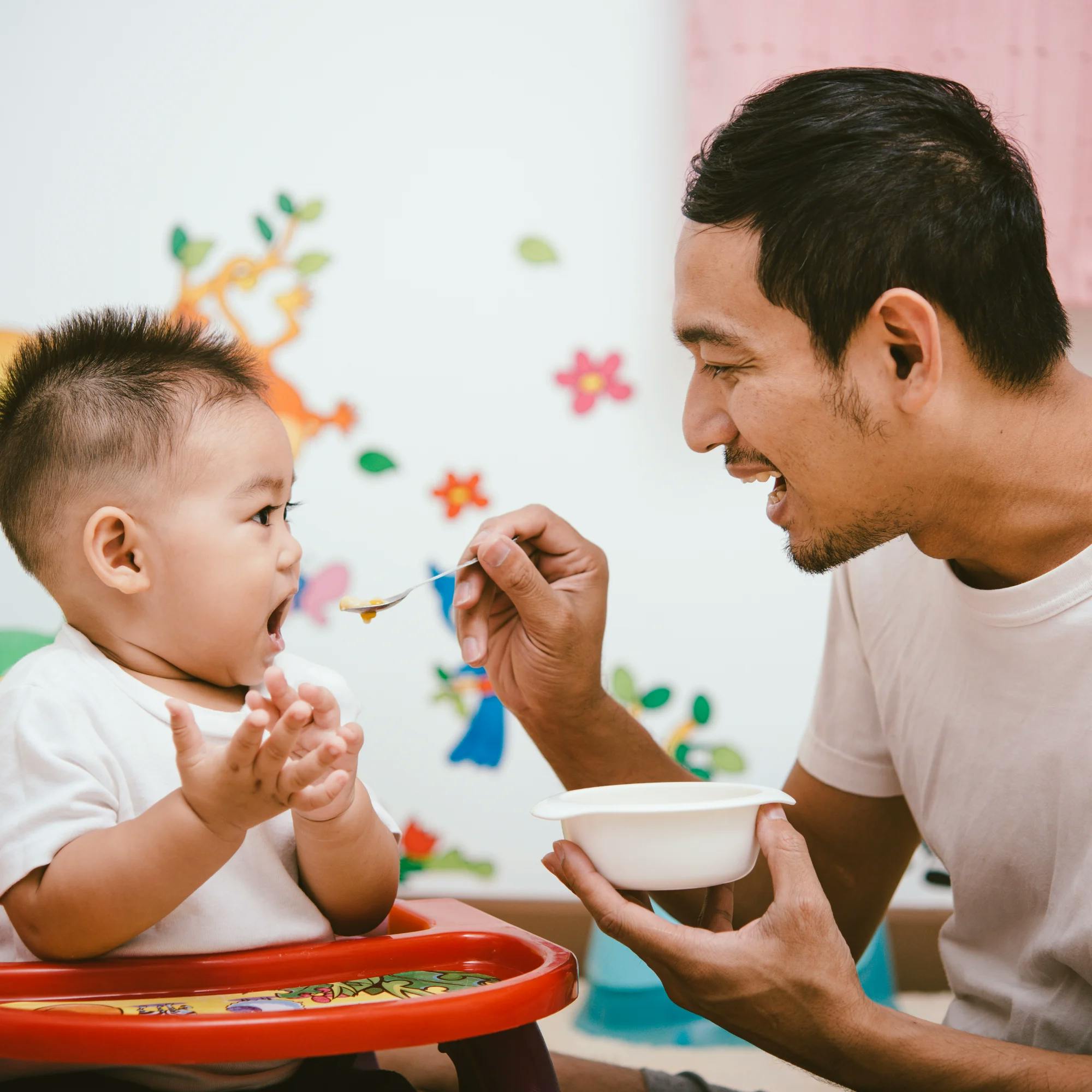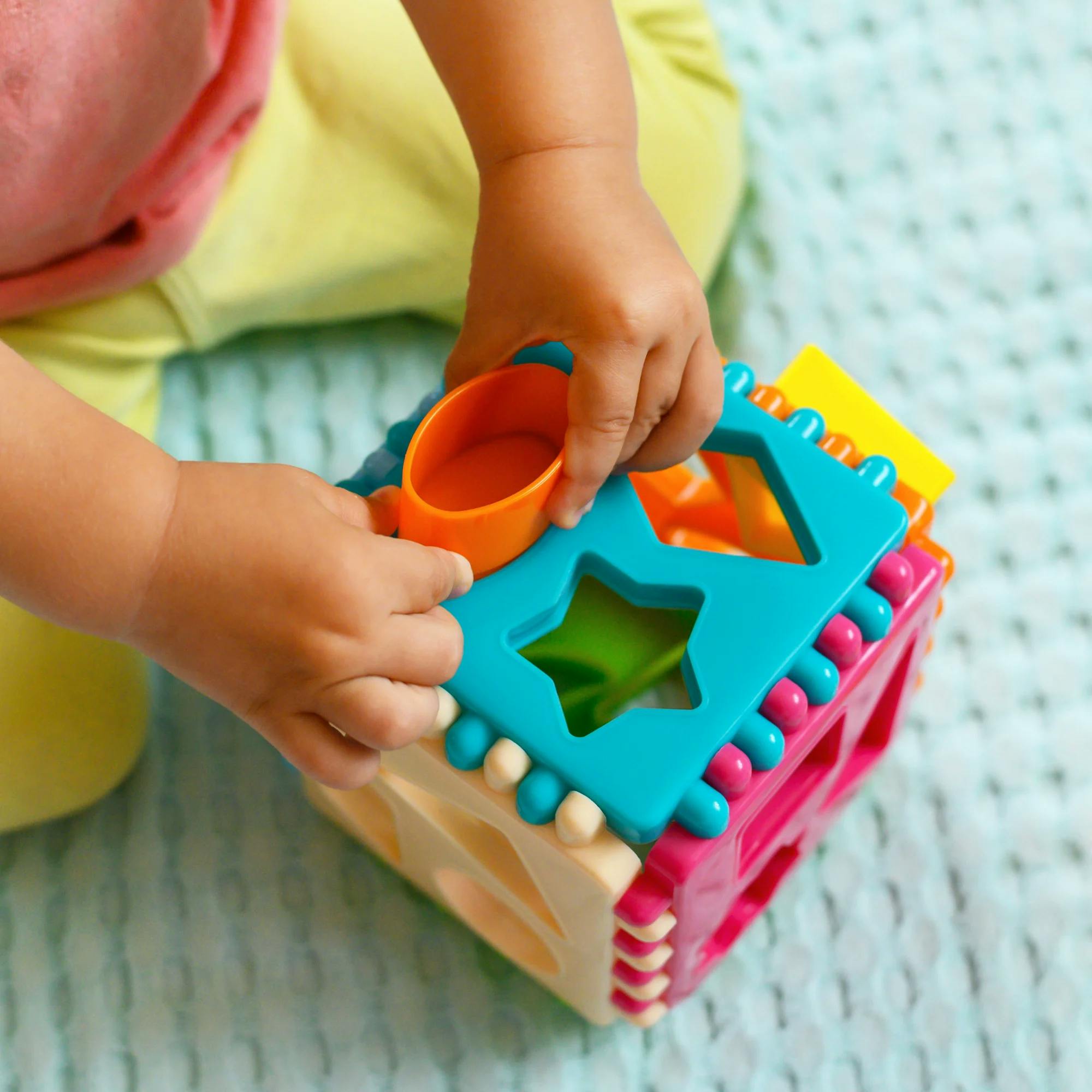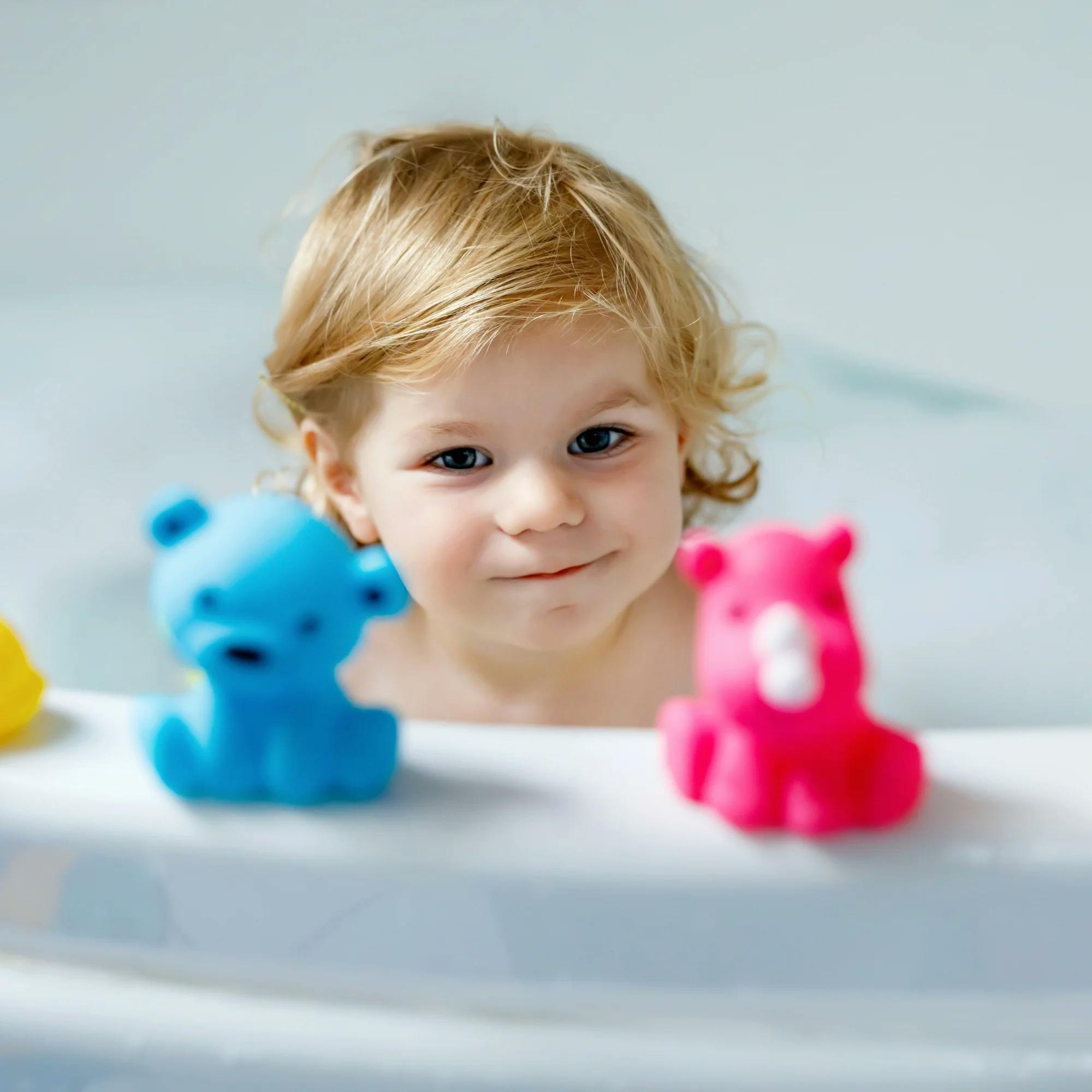The moment you finally meet your baby is an incredible one. You now have the amazing job of raising the sweet little newborn in your arms. And of course, there’s a lot to learn about caring for your baby: feeding, sleeping, and diapering, to name a few.
Parents and caregivers often receive a lot of instruction about how to physically care for their baby. But what about your baby’s communication skills–those important milestones that lead up to them saying their first words?
In the first 12 months of life, children need to build the foundation for their speech and language skills. And as your child’s caregiver, you play a key role in that development. That’s why we’ve created this month-by-month guide to help you support your baby’s language growth, from birth to age 1 year.

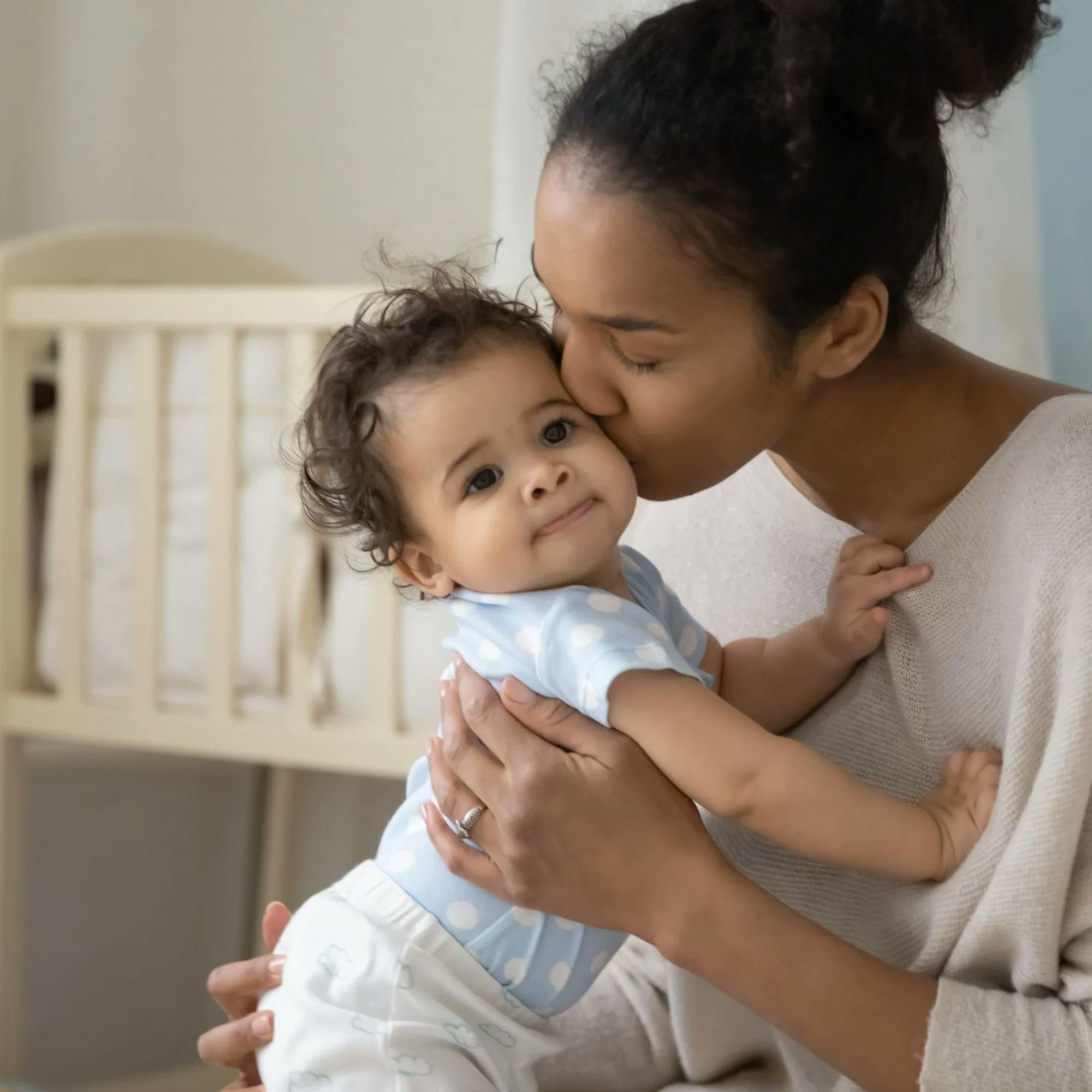
Month 1: Grow your connection with your baby
The first thing you can do to help your infant with their communication skills is something you’re likely already doing. Simply focus on strengthening your connection and bond.
Here are some ways to bond with your baby:
Respond to their cries.
Pick your baby up frequently.
Hug them and kiss their little cheeks.
Rock your baby before bed.
When you establish this relationship, your baby knows to turn to you for every need. Yes, they will cry–their crying is instinctual, and it’s the only way they can communicate early on. But the consistent responses you give them will teach your baby that by crying and looking to you, they will get their needs met!

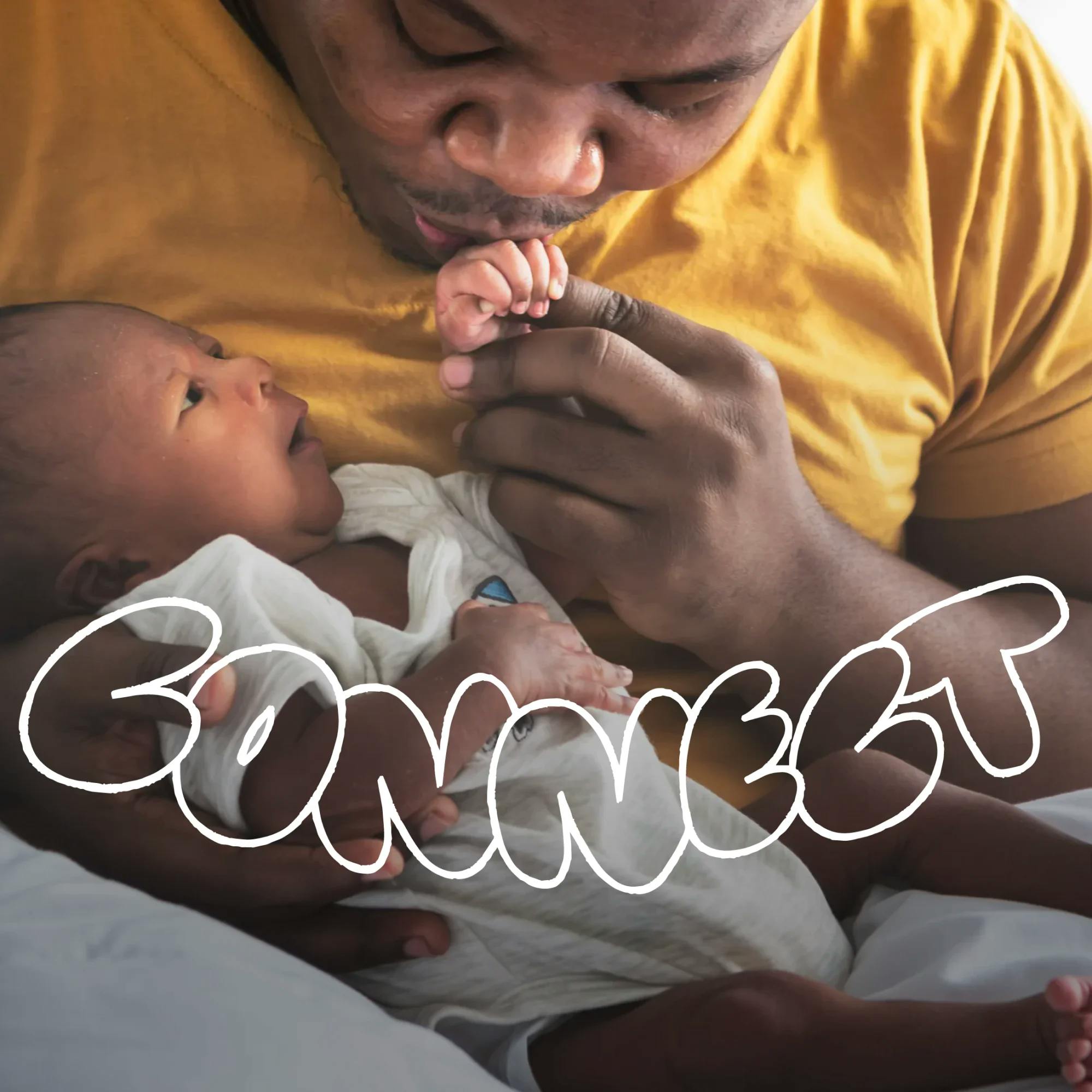
Month 2: Be face-to-face with your baby
Focus on being face-to-face with your baby often. You can do this during feedings, when playing, during diaper changes–it can be any time! And all those little moments add up.
Why is being face-to-face with your baby important? Babies learn to watch our faces and even imitate them as they get older. When you smile at your baby and use big, happy (or silly!) facial expressions, you’ll engage their interest, and they’ll study your face and expressions. They won’t just be entertained, they’ll actually be learning: how to smile, how to imitate facial expressions, and how to respond when you make faces at them.
Watch for the milestone of your little one's first smile in the 6- to 8-week range. It’s a sweet milestone that you won’t forget!

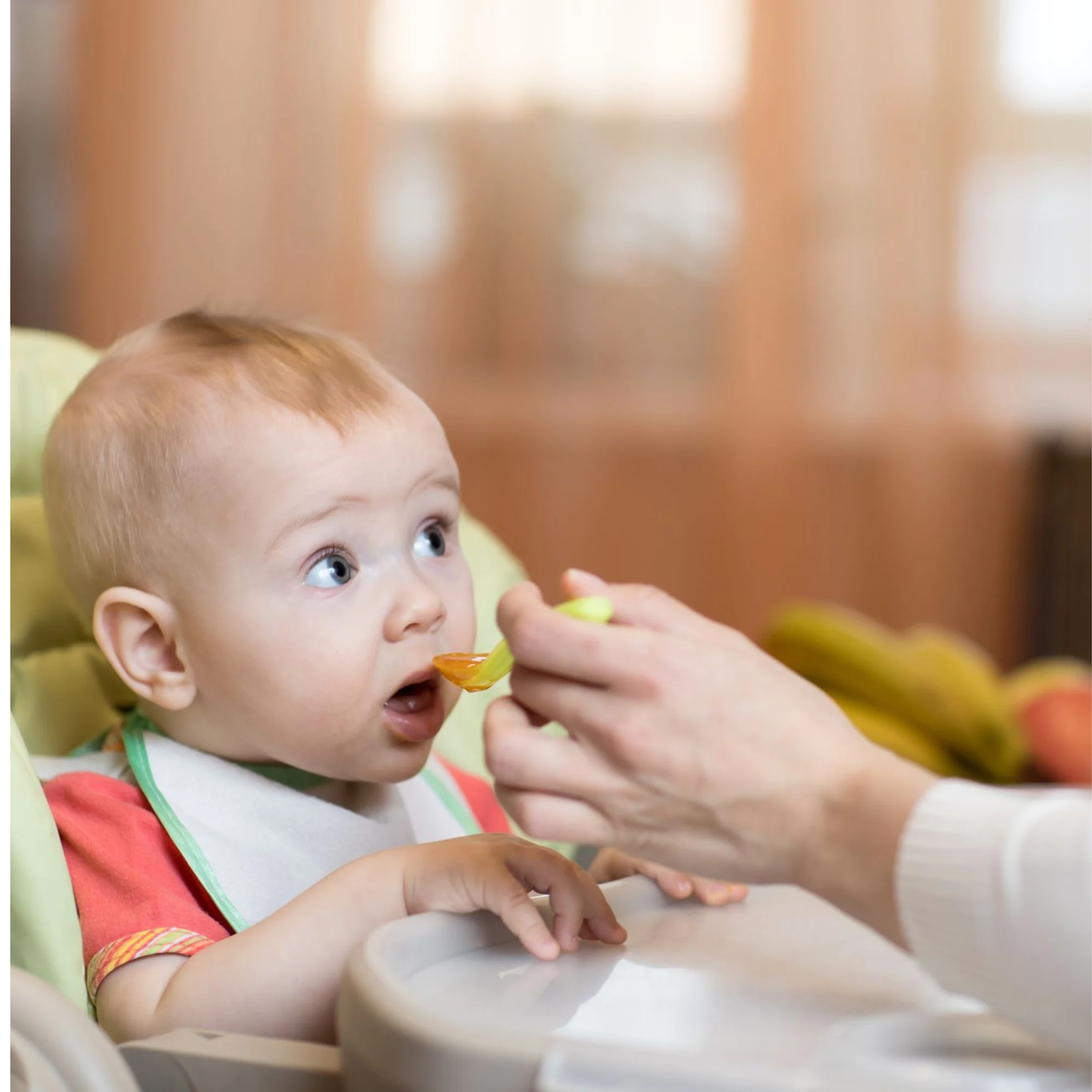
Month 3: Work on cooing with your baby
As your baby enters their third month, you’ll likely hear them cooing. If they haven’t started yet, now is the perfect time to work on this!
Here’s how to help your baby learn to coo. Make cooing sounds and a variety of vowel sounds to your baby, moving your voice up and down with varying inflection. See if your baby can imitate you! Make sure you’re face-to-face with your baby so they can focus on you.

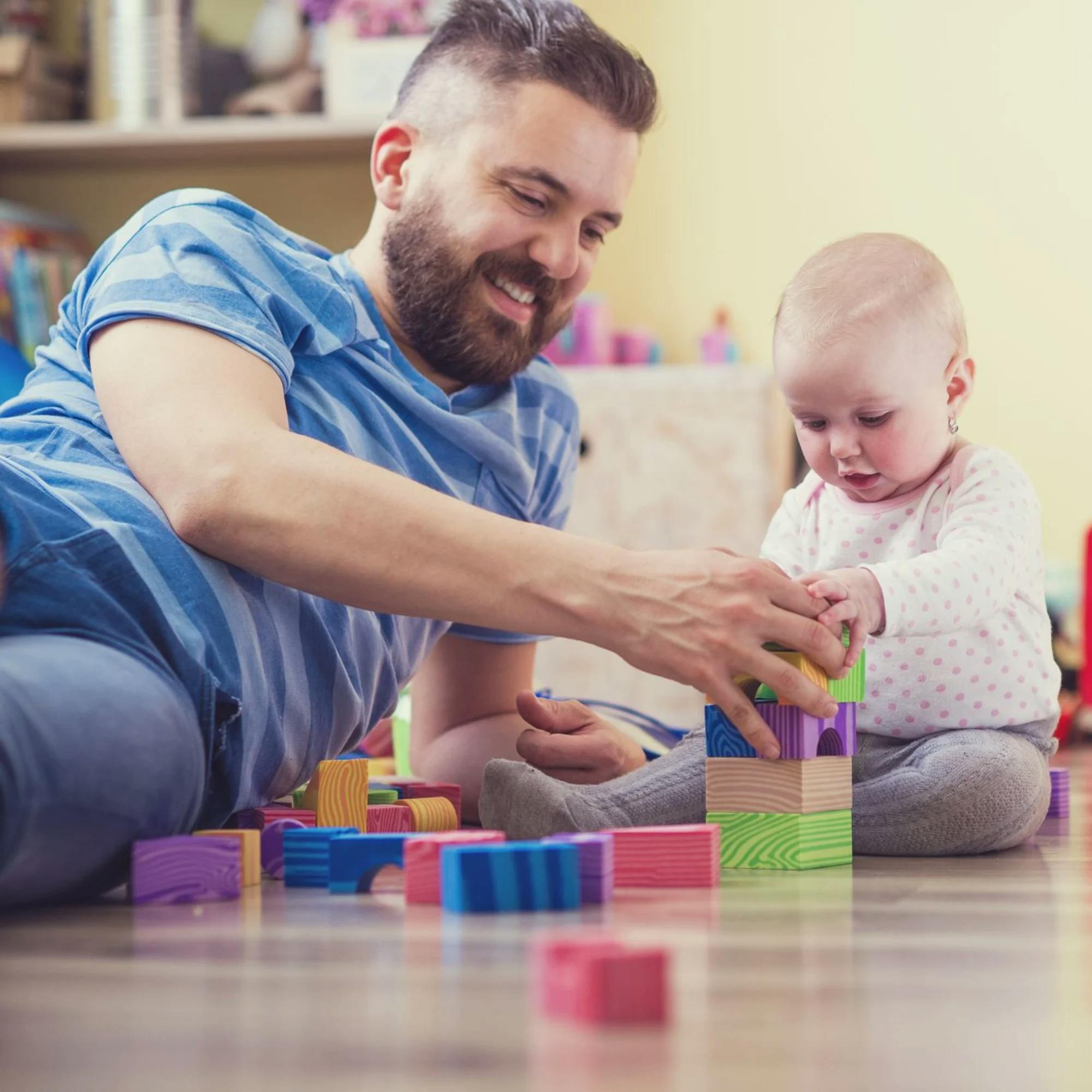
Month 3: Use parentese, or “baby talk”
You may not have heard the term “parentese,” but chances are good that you’ve used it. Parentese is how speech-language pathologists commonly describe “baby talk.” It’s the way we tend to speak to an adorable little face looking up at us. Maybe our voice suddenly goes higher, or our tone becomes sweeter, or our eyebrows rise up.
Now, using parentese is a good thing to do with your baby from day one. But because your baby will likely start becoming quite vocal soon, month 4 is when you really need to be practicing it.
Research has consistently shown that talking frequently to your baby, and speaking in parentese, sets children up for successful language development.
For example, one study compared babies whose caregivers used parentese and spoke to them often with babies whose caregivers didn’t use this approach. The babies in the first group babbled much more between ages 6 and 14 months. At 14 months, they spoke significantly more words than the second group of babies.

So what does parentese sound like?
Speaking at a higher pitch
Speaking slowly and clearly
Elongating your vowels (for example, “I see a do-o-og.”)
Exaggerating your facial expressions (such as using lots of happy, surprised, or sad faces when reading a book or playing together)
Using a variety of engaging tones of voice
Using simple sentences with correct grammar
Check out this quick (and adorable) video showing parentese in action. These are easy changes you can make in the way you talk with your baby–and they’ll make a huge difference in your child’s language abilities!

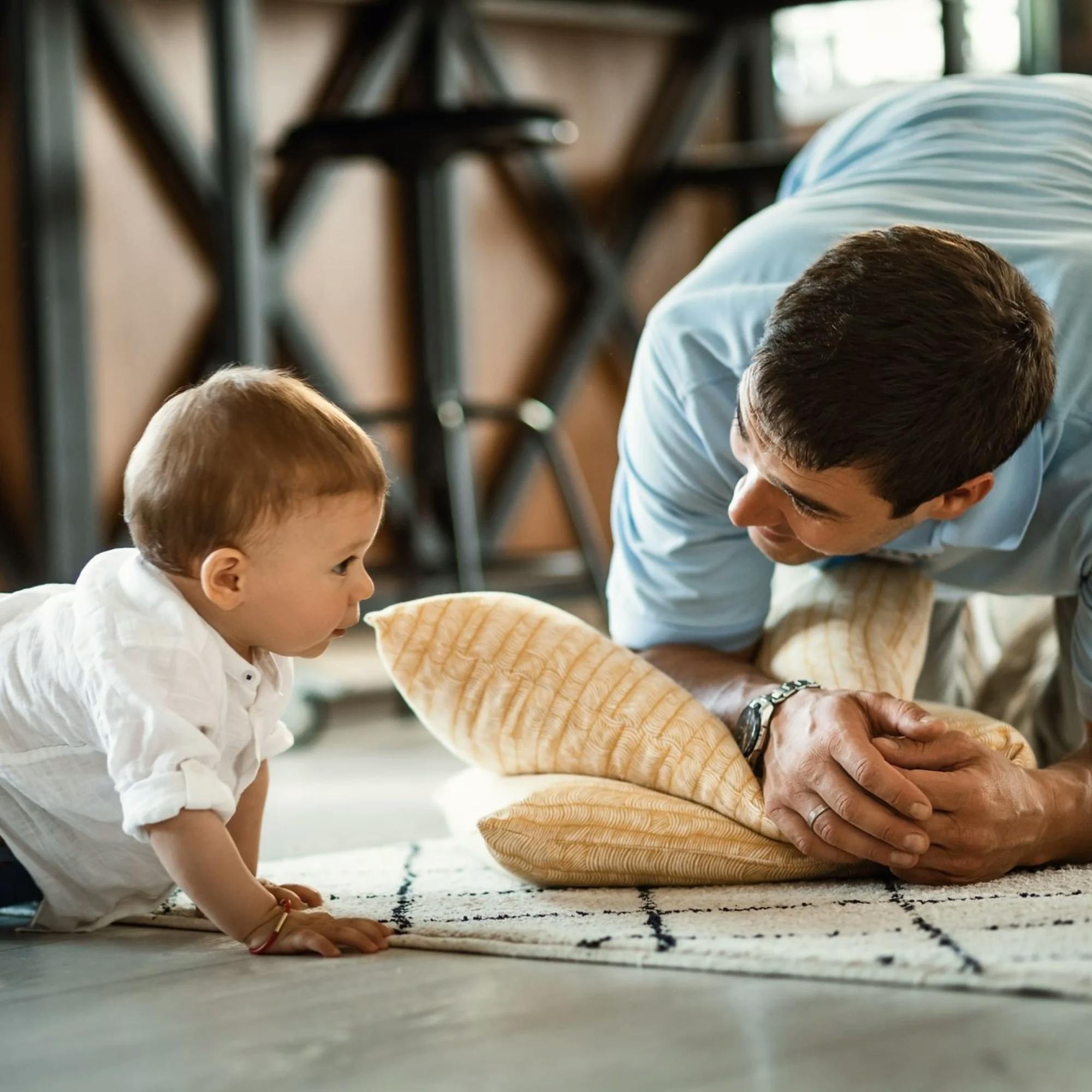
Month 5: Practice babbling with your baby
What sounds should your baby be making at 5 months? Once your baby is cooing, babbling comes next. Babies usually start to babble around ages 4 to 6 months. You may first hear an occasional “ba!” or “ma!” Then, over time, you’ll hear longer strings: “bababa!” or “mamama!” To help your baby learn to babble, talk to them as you normally would, and pick out words that have simple sounds like /b/, /m/, or /d/. Try modeling sounds and helping them practice babbling. Here’s an example: “Do you want milk? Mmmmm milk? M-m-m?” or “Do you want Dada? Da-da?”


Month 6: Teach your baby simple signs and gestures
Did you know that teaching your child to use gestures can help them in their communication skills? Of course, learning to sign words like “more” or “help” can help babies communicate their needs. But even simple gestures like clapping, waving, or blowing kisses can aid in communication. This is because learning to imitate any gesture helps teach imitation skills in general. Imitating gestures is often a precursor to imitating sounds and–you guessed it–words!
Even simple gestures like clapping, waving, or blowing kisses can aid in communication.
Start by focusing on simple gestures with your 6-month-old. You can have your baby repeat waving hello and goodbye, or clapping their hands.
You can teach your baby sign language as well. Focus on functional baby signs such as “more,” “go,” “eat,” “help,” and “milk.” Show your baby how to use these signs, saying the word at the same time. You can begin practicing baby sign language at any time, but you likely won’t see your baby use signs until 6 months at the earliest. Many babies don’t use sign language until closer to age 8 or 9 months.
Month 7: Use music to teach your baby gestures
You can also practice gesture imitation by singing nursery rhymes that have hand motions. Think “The Itsy-Bitsy Spider” and “The Wheels on the Bus.” This is always a crowd pleaser with babies, and it’s a fun, engaging way to keep them entertained.
Month 8: Play peek-a-boo with your baby
Peek-a-boo is a fun game to play with your little one, but there’s more to it than that. Simple interactive games like this help your baby begin to participate in a task with you, much like communication. Someone initiates the game, the other responds. It’s a back-and-forth exchange, similar to what takes place when communicating with another person.
Start by showing your baby how to play. Hide your eyes behind your hands, or hide your face behind a blanket. Reveal your face and say “peek-a-boo!” with a big smile.
Once your baby is around 9 months old, they may begin initiating this game on their own. They may hide their eyes or pick up a blanket. When you see them do this, say, “Where did you go?!” When your baby pops out, you can say, “There you are!” They will be all smiles, ready to play this game again and again.
Month 9: Read books with your baby
The importance of reading with your child can never be overstated. There are several reasons that reading with your baby is so impactful. For one, research shows that children who hear more language will eventually learn and use more language. Consider this mind-blowing stat: One study revealed that when parents read just one book a day to their kiddo, by the time that child enters kindergarten, they’ve heard a total of 1.4 million more words than children who aren’t read to.
Reading together allows your baby to hear more sounds, words, vocabulary, and sentence structures than they may typically hear in a day. You can start reading with your newborn, but by the time your child is 8 months old, reading is also an engaging way to help them learn the names of items in pictures.
Quick demo: How to read a book to your child like a speech therapist
Watch hereMake reading together a routine. Follow your child’s lead, and pick books with pictures that interest them. And here’s a tip: You don’t always have to read the words on the page. Simply talk about what you see in the pictures, or give a simpler version of the story. If your baby points to a picture or seems interested in it, make sure to respond and focus on that picture.
You can also check out this quick video, where one of our speech therapists demonstrates a few of these tips with a favorite board book for toddlers!

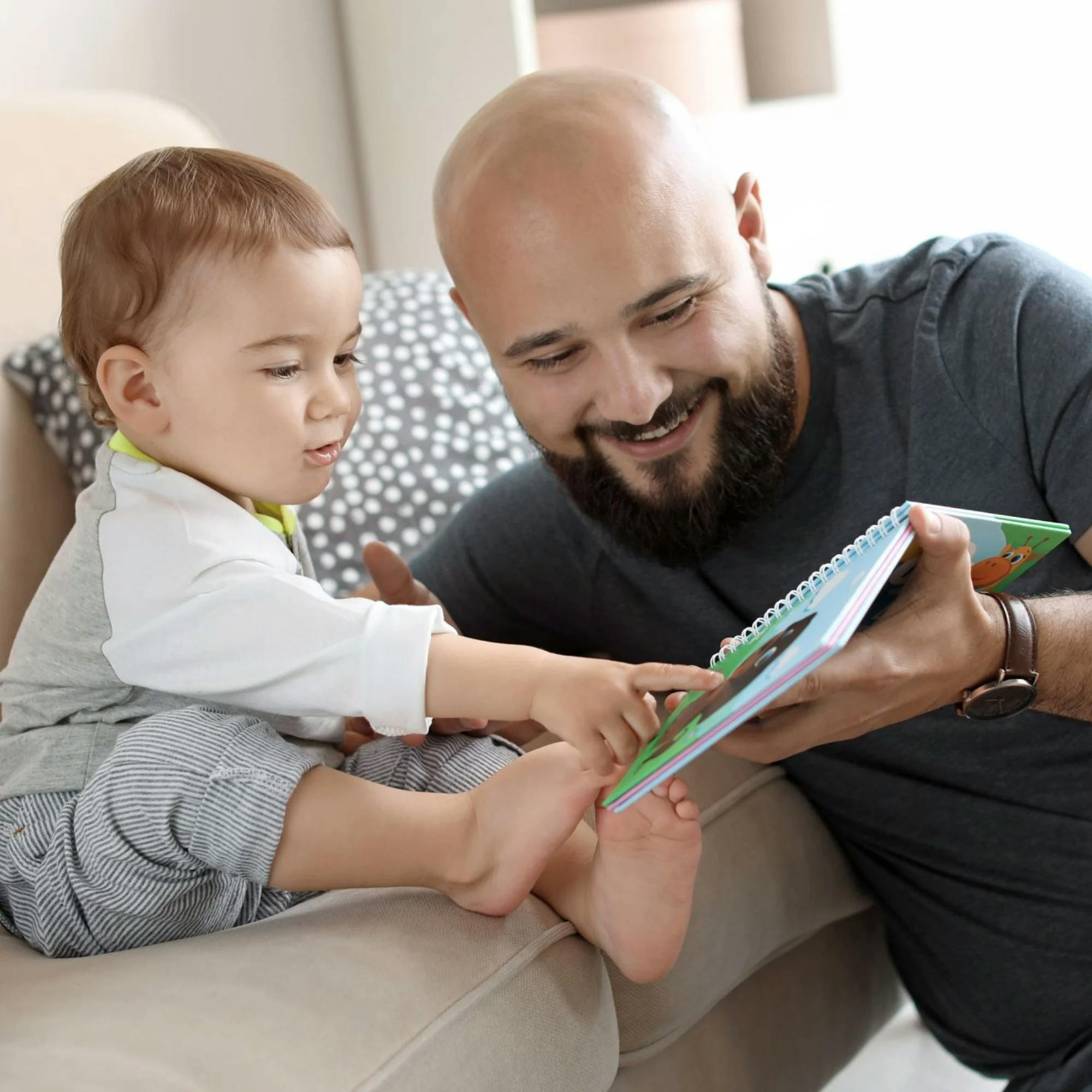
Month 10: Use play to grow your baby’s language skills
Did you know that play is a huge part of language development? It may not seem like your 10-month-old is old enough to play, but they are! Even the simplest forms of play can teach essential language skills.
How can you play with your 10-month-old? Here are a few games and play routines to try with your baby in month 10:
Tickle your baby to teach them anticipation. Tickling your baby is sure to get lots of giggles, and it teaches your baby to anticipate what happens next. Here’s how to do it:
Tickle your baby a few times.
Then, hold up your hands and pause. See if your baby scrunches up their face, smiles, giggles, or puts up their hands, as if they’re saying, “I know what you’re about to do!”
After a short pause, go on with the game and tickle your baby.
Babies typically demonstrate these anticipation skills during play by 6 months of age. Just be sure to watch for any point when your baby seems ready to stop!
Make swing time more interactive. You can make a fun play task, like swinging, more interactive. Instead of pushing your baby on a swing from behind, push them from the front. (Make sure they’re secure in the right swing seat for their age, such as a bucket seat with a high back.)
After you push the swing, grab the swing and hold it. You can say “Ready, set,” then pause. For older babies around age 9 to 12 months, you can help them sign a request like “more!” or “go!,” or have them repeat a sound or word after you. After giving it a few seconds and letting them try, go ahead and continue on pushing the swing.
Teach your baby to play with toys. As your baby becomes more interested in real toys toward the end of their first year, show them how to play. You can do this by pushing cars on the ground, stacking blocks, or pushing shapes through a shape sorter.
When babies learn to play, they are learning cause and effect. They learn that if they push the car, it drives. If they knock the tower of blocks over, it falls. Communication is essentially a cause-and-effect relationship. Babies learn that when they point, gesture, make a sound, or say a word, someone responds. They have to learn cause and effect in all kinds of situations, like play, to help make this connection about communication.

Month 11: Teach your baby to imitate sounds and words
As your baby begins making more sounds, and maybe even attempting or saying some words, focus on helping them imitate you. Once they gain good imitation skills, they can start imitating more and more, leading them to eventually say new words all on their own!
Help your baby imitate sounds and words during motivating activities, such as when you’re playing together or out and about. Follow your child’s lead: Notice what they’re interested in, and find some related sounds or words to prompt them to imitate.
Month 12: Focus on vocabulary with your 1-year-old
It’s been almost a whole year of watching your little one grow. Reaching month 12 is a big milestone, not only for your child, but for you, too!
Babies typically say their first word somewhere around the 1-year mark, although it could be a little earlier or later. Help your 12-month-old learn a variety of vocabulary words by not only naming people, places, and things, but also using action words and descriptive words.
Babies typically say their first word at around 12 months old, although it could be a little earlier or later.
You can do this at any time, although it works especially well when you’re out and about. The more experiences you can give your child, the more there is to talk about and the more words they can learn.
For example, when you’re at the park, talk about the bird that is flying or the child that is running fast. When you’re at the grocery store, let your child feel the bumpy pineapple or help you add the orange carrots to the cart.

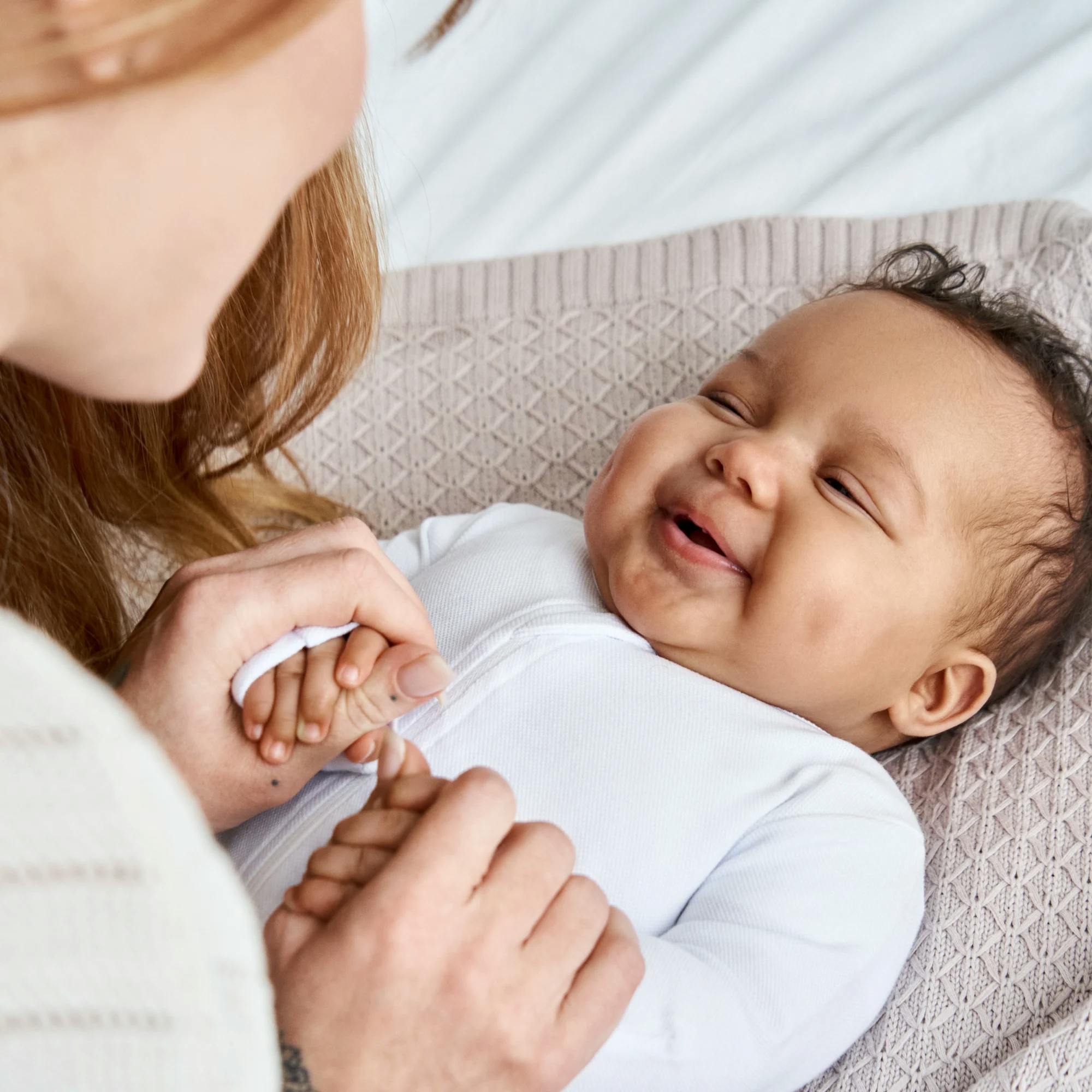
As your baby’s caregiver, there are so many ways you can help them learn and grow their communication skills. Each month brings something new in your child’s development–and new milestones to celebrate, big and small!
How Expressable Can Help
Concerned your child isn't reaching age-expected milestones? Looking for communication support from a professional? Expressable is a national online speech therapy practice serving children and adults. We treat all major areas of communication and feeding, offer flexible hours including evenings and weekends, and accept most major health insurance plans. We’re proud to have earned more than 3,000 5-star reviews from our clients (4.9/5 average).
Our therapy model is centered on parent and caregiver involvement. Research proves that empowering caregivers to participate in their loved one’s therapy leads to better outcomes. That’s why we combine live, 1-on-1 speech therapy with personalized education and home practice activities for faster progress.
Communication is more than words. It’s how we share how we feel and show who we are. We’re here to help you or your child do just that.

 Abby Barnes, M.S., CCC-SLP
Abby Barnes, M.S., CCC-SLP
